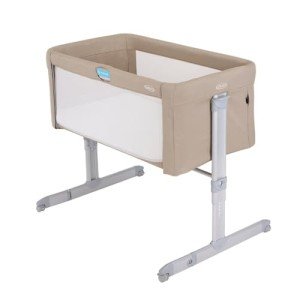The Benefits and Considerations of Bedside Sleepers for New Parents
As new parents navigate the interesting and overwhelming experience of welcoming a newborn, making sure a safe and comfortable sleeping arrangement ends up being essential. One of the ingenious options that have gotten enormous appeal over the last few years is the bedside sleeper. This convenient sleeping plan provides numerous benefits, catering specifically to the needs of both parents and their infants. This article explores the different features, advantages, and factors to consider of bedside sleepers, together with frequently asked questions.
What is a Bedside Sleeper?
A bedside sleeper, typically described as a co-sleeper, is a kind of crib designed to connect securely to the side of the parent's bed. It enables the newborn to sleep within arm's reach while developing a separate sleep space, which is important for the baby's security. Bedside sleepers been available in numerous designs, sizes, and styles, making it easy for parents to find an ideal one that matches their home décor and individual choices.
Secret Features of Bedside Sleepers
Bedside sleepers normally have distinct functions that set them apart from conventional cribs or bassinets. Here are some common attributes:
- Adjustable Height: Many bedside sleepers permit parents to change the height to match their bed, ensuring seamless access to the baby.
- Strong Safety Straps: Bedside sleepers are equipped with security straps that protect them to the side of the adult bed, avoiding accidental movement.
- Breathable Mesh Sides: Most designs have mesh sides for presence and air flow, allowing parents to monitor their baby without difficulty.
- Easy Access: The design enables parents to reach their baby easily for feeding or soothing without rising.
- Portability: Many bedside sleepers are lightweight and easy to move, making them convenient for travel.
Benefits of Bedside Sleepers
1. Encourages Bonding
Being able to see, hear, and reach their baby quickly fosters a strong bond between parents and infants. Bedside sleepers help with skin-to-skin contact, nighttime feedings, and soothing.
2. Promotes Safe Sleep
Bedside sleepers are designed to satisfy safety standards for infant sleeping. The different space lowers the dangers related to co-sleeping, such as suffocation, while still permitting parents distance.
3. Easier Nighttime Feedings
Breastfeeding moms, in particular, value bedside sleepers for their benefit. Mothers can nurse their babies without completely awakening, which helps relieve nighttime routines for both parents and infants.
4. Improved Sleep Quality
With a bedside sleeper, parents can keep a consistent eye on their infants, which can lead to lower stress and anxiety and improved sleep quality for both parties.
5. Saves Space
For parents with restricted space, bedside sleepers offer a useful option. They inhabit less room than standard cribs and can be safely connected to the parents' bed.
| Function | Bedside Sleeper | Conventional Crib |
|---|---|---|
| Proximity to Parents | Close | Far |
| Adjustability | Yes | Typically No |
| Mobility | Easy | Frequently Bulky |
| Different Sleep Space | Yes | Yes |
| Security warranties | High | High |
Factors to consider Before Purchasing a Bedside Sleeper
1. Safety Standards
When picking a bedside sleeper, guarantee it meets security regulations set by entities such as the Consumer Product Safety Commission (CPSC). Search for models with durable building, safe and secure accessories, and no harmful materials.
2. Size and Fit
Not all bedside sleepers might work with your bed. It is vital to think about the height of your bed and the size of your room to make sure the sleeper fits easily along with without obstructing motion.
3. Duration of Use
Identify how long you plan to use the bedside sleeper. www.cots4tots.co.uk of designs can accommodate infants till they can stay up unassisted or reach particular weight limitations. Confirm that the item is created for your designated use duration.
4. Ease of Cleaning
Infants can be unpleasant, so consider how easy it is to clean the bedside sleeper. Try to find materials that are washable or have detachable covers for convenience.
5. Budget
Rates for bedside sleepers differ significantly based upon design and brand. Set a spending plan before shopping, remembering that higher-cost items typically feature much better safety functions and toughness.
Frequently Asked Questions About Bedside Sleepers
Q1: Is it safe to use a bedside sleeper?
A1: Yes, when used properly and according to the maker's directions, bedside sleepers are typically safe for infants, offering a separate sleeping space near to the parents.
Q2: How long can I use a bedside sleeper?
A2: Most bedside sleepers can be used until the baby is about 5-6 months old or when they can roll over, press up, or sit unassisted. Constantly refer to the weight and security limitations defined by the manufacturer.
Q3: Can I use a bedside sleeper with a king-size bed?
A3: Many bedside sleepers are adjustable and can be utilized with king-size beds, however it's necessary to examine the specs before buying.
Q4: How do I clean up a bedside sleeper?
A4: Cleaning guidelines vary by design, but numerous have detachable and machine-washable covers. Always examine the producer's recommendations for proper care.
Q5: Are bedside sleepers costly?
A5: The cost of bedside sleepers can vary widely, usually falling in between ₤ 100 to ₤ 300, depending on functions and brand name. It's advisable to balance quality and affordability.
Bedside sleepers offer many benefits for new parents, providing a safe and convenient sleeping choice that fosters bonding throughout the early months of a baby's life. With cautious consideration of safety standards, size, and ease of use, parents can choose the ideal bedside sleeper to make sure a peaceful night for both themselves and their infant. By comprehending the advantages and prospective drawbacks, new parents can make better-informed decisions that suit their way of life and household needs, leading the way for a smoother shift into being a parent.

